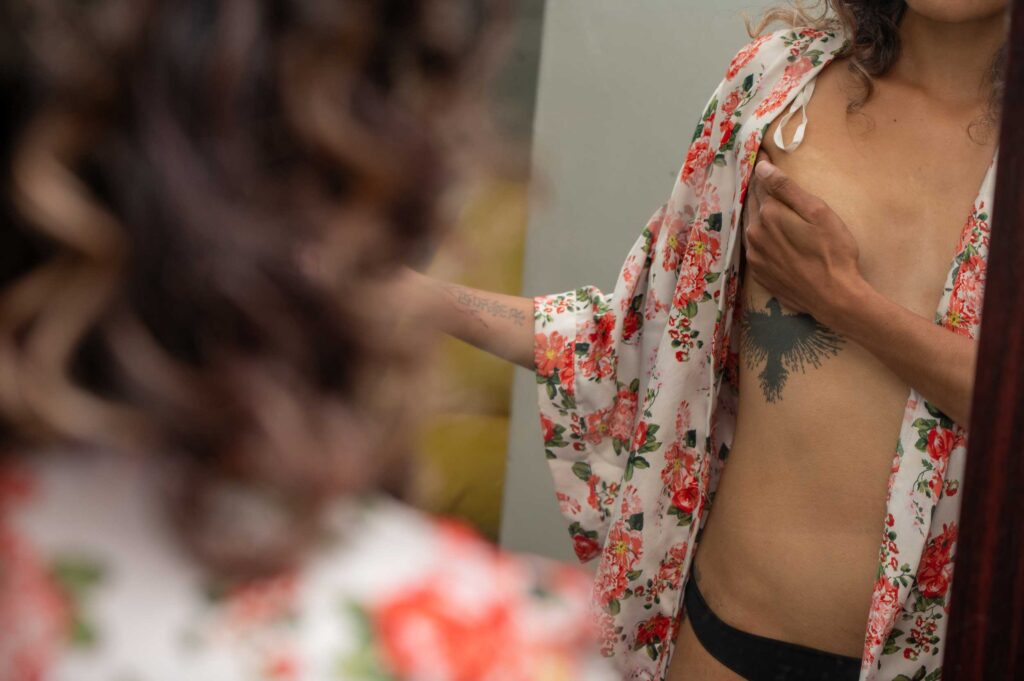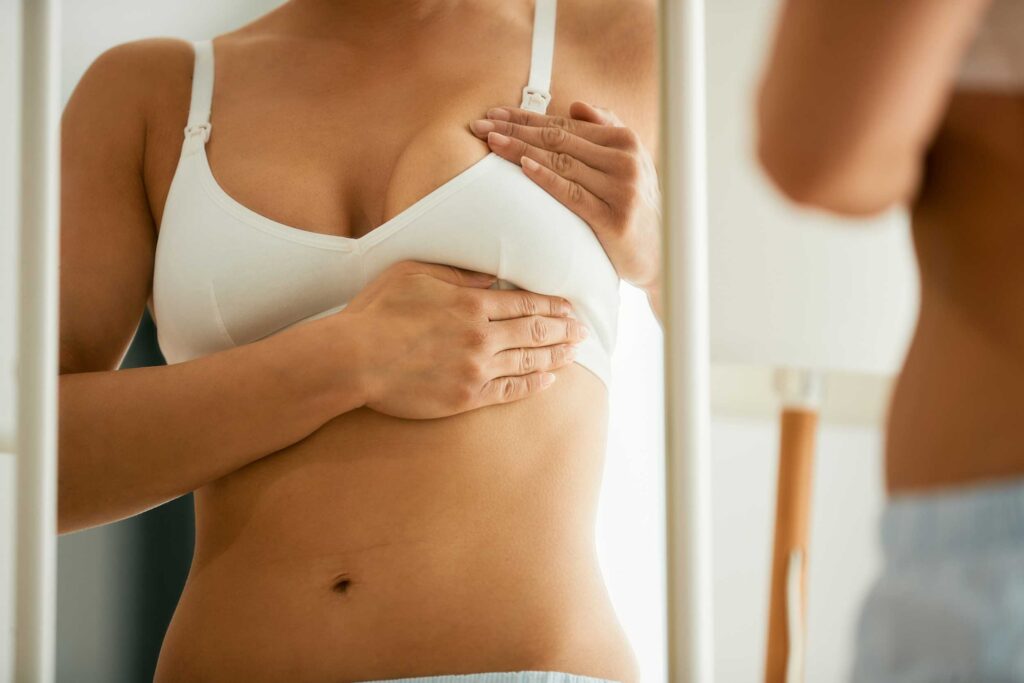While there are now modern imaging methods when you want a custom-made breast prosthetic, there are cases where a full imaging may not be necessary like when going for a traditional breast form. These may not be customized to be exactly the same as your natural breast (if you only had a single mastectomy) but they can be selected to be as close as possible to your own breast.
Identifying your breast shape for prosthesis selection will involve understanding the characteristics of your natural breast, including factors such as projection, fullness, and positioning.
Here are some steps you can take to identify your breast shape:

- Fullness and Projection:
- Determine where the fullest part of your breast lies. Stand in front of a mirror and observe whether the fullness is at the bottom, top, or evenly distributed across your breast. Make sure there is nothing supporting your breasts, allow them to hang naturally to identify its natural state.
- Assess the projection of your breast. Projection refers to how far your breast extends from your chest wall. Some breasts have a shallow projection, while others have a more pronounced projection.
- Root Width:
- The root width of your breast is the width of the base where your breast meets your chest wall. Determine if your breasts have a narrow, average, or wide root width.
- Multiple possible combinations with projection width occur in different women such as:: narrow width + high projection, wide width + shallow projection, etc.
- Position on the Chest:
- Face the mirror directly without tilting your view angle to the side. This way you can see with equal coverage both sides of your breast. It helps to have lighting that does not create optical bias of one side (side lamps or strong contrasting lights only focused on one side)
- Identify the position of your breasts on your chest. Are they centered, close-set, wide-set, or asymmetrical in placement?
- Top and Bottom Fullness:
- Observe the amount of fullness in the upper and lower parts of your breast. Some breasts are fuller at the top (full on top), while others have more fullness at the bottom (full on bottom).
- Observe the amount of fullness in the upper and lower parts of your breast. Some breasts are fuller at the top (full on top), while others have more fullness at the bottom (full on bottom).
- Symmetry and Asymmetry:
- Note if your breasts are symmetrical (similar in shape and size) or if there’s noticeable asymmetry (one breast being larger or differently shaped than the other).
- Note if your breasts are symmetrical (similar in shape and size) or if there’s noticeable asymmetry (one breast being larger or differently shaped than the other).
- Breast Size and Profile:
- Consider the overall size of your breasts. Are they small, medium, or large?
- Think about the breast profile or contour. Some breasts have a round shape, while others are more teardrop-shaped.
Think about the breast profile or contour. Some breasts have a round shape, while others are more teardrop-shaped.
- Skin Characteristics:
- Assess the elasticity of your skin. This can influence how a prosthesis will conform to your body.
- Assess the elasticity of your skin. This can influence how a prosthesis will conform to your body.
- Previous Bra Fit:
- Reflect on the types of bras that have fit you well in the past. This can provide insights into your breast shape and size even without a complete breast shape imaging.
Buying your breast form may feel confusing at first when you are dealt with several things to consider. The whole purpose of having a better idea of your breast shape is so that you can share these characteristics with a professional fitter who can help you choose the right breast form for you. Your fitter will take into consideration size, shape and your lifestyle when fitting you with your breast prosthesis. We carry several styles, shapes and weights to evenly match your remaining breast when fitting after a unilateral mastectomy.
